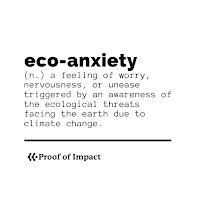Given a little Halloween frightfest at the hospital this year (aka: scheduled surgery), I've been back to being laid up with more "
wintering" and recovery happening at home.
What does that mean for me? A lot of sleeping, reading, some TV binging, and repeating... once again.
The timing of it is such that it has hit a lot of holidays: starting with Halloween, then spanning my Thanksgiving and Christmas, with the return being hopefully at the start of the new year.
I did this purposefully to take advantages of the Thanksgiving and Winter Breaks, because ahhh... the calendar as decided by the teacher's school year!
One of the many books I read during this span of time was Hope: A User's Manual by MaryAnn McKibben Dana. I got it for a friend of mine who is troubled by the global climate crisis and how we always seem to miss our mark. As can happen with climate conversations, the level of doom and gloom can get you down.
I wanted to give my friend "hope." Given "hope" has been a frequent theme in my own book choices, I felt I could use another dose of it myself, and got myself a copy as well.
The thing I really liked about this book (and something that made it fascinating to be reading it while sequestered at home during election season earlier this month), is that it referenced hope through the lens of so many things.
Included in this list: elections, insurrections, social justice, systemic racism, climate change, pandemic pandemonium, and more. Many of these things are the exact concepts that (over the last half dozen years) still feel so heavy on me. Hope: A User's Manual met my post-hospitalization-hibernation well. I utilized this time to sleep, recover, and reflect on it all along with many other things. The author admitted early on the mere writing of the book, during the pandemic, was an attempt to "write herself back into a sense of hope" [p. 11].
I needed that book too.
MaryAnn McKibben Dana paints hope as different than optimism, toxic positivity, pithy platitudes, gaslighting, perfectionism, or over-romanticized nigglings and notions.
Instead, hope is a "muscle to be exercised" [p. 22].
It is active not passive.
It sometimes is quiet, and sometimes it gains fire from an anger that burns within.
It can sometimes stem from joy and laughter and play.
It can often times be uncomfortable--but we don't grow through comfort.
It is a story we cultivate.
It's the micro-movements we make.
It's the breaths that stablize us.
It's the beauty in nature that surrounds us.
It's the small beacon of light on a dark day.
It's the hard things that don't get fixed quickly or sometimes even in our generation, but that improve over time.
It's the collective good fight to create a better world.
It is grace, compassion, self-kindness, and perseverance.
To me, hope has a lot of the same power as gratitude.
Gratitude is what alters your perspective toward what you have, not what you need. It can inspire you to give to those who need appreciation. It can lead you to give to grow your thankful heart.
May you have a Thanksgiving holiday filled with gratitude, friendship, countless blessings, and hope.
Photos from https://www.townandcountrymag.com/leisure/arts-and-culture/g22701713/happy-thanksgiving-quotes/?slide=9; Additionally, from the same website gallery: Slide 5, Slide 2, Slide 12, Slide 16, Slide 21, slide 22, Slide 25, Slide 29, Slide 32; Banner created at www.canva.com



















